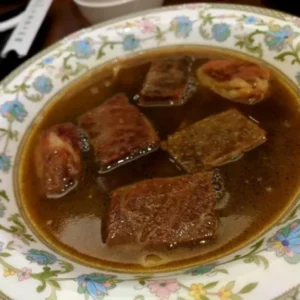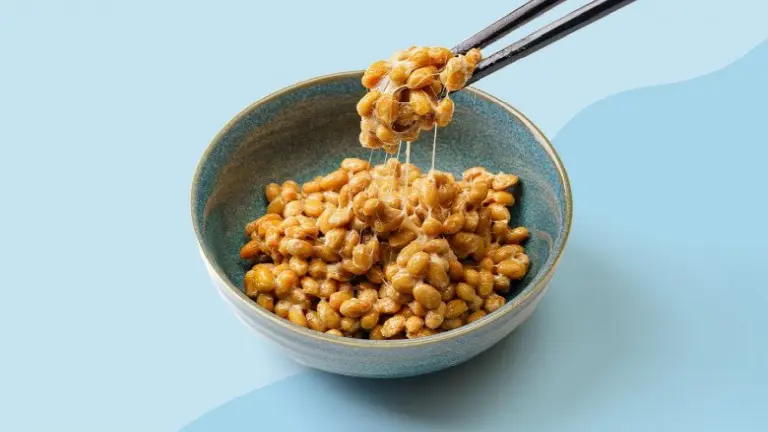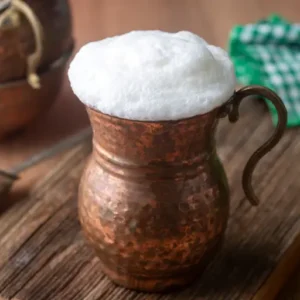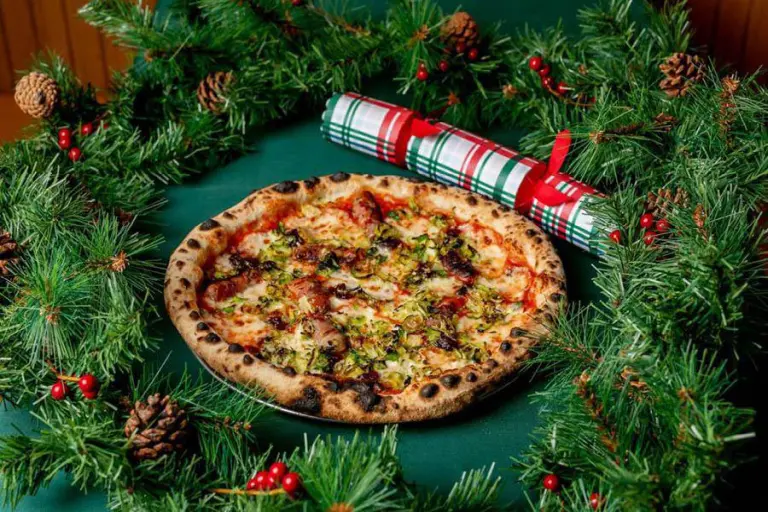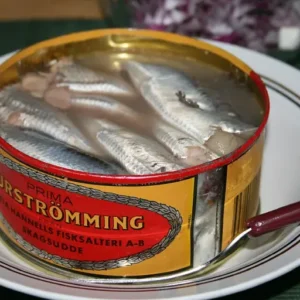From a traditional morning market, Raohe has transformed into one of Asia’s premier culinary destinations, with six stalls awarded by Michelin.
As night falls in Taipei, glowing red lanterns light up the entrance of Raohe Night Market, signaling the start of a vibrant evening. Hundreds of stalls line the 600-meter stretch in Songshan District, ready to welcome tens of thousands of food lovers from around the world. Visitors come not only to enjoy street food but also to experience a vital part of Taiwan’s urban culture.
A Journey from Traditional Market to Culinary Hub
Raohe Night Market wasn’t born overnight—it originated from a morning market active since the early 20th century. Its strategic location near the Keelung River port (Xikou) made it a key trading hub where merchants from Keelung and Yilan exchanged goods frequently.

>> Inside the world’s most expensive bowl of beef noodle soup: Foodies flock to Taiwan for a Taste
However, during the Japanese occupation (1895–1945), river silting and new urban planning reduced trading activities. The once-bustling area became quiet, and vendors gradually disappeared.
The turning point came in 1987, when the Taipei government boldly transformed the area into the city’s second “tourist night market” after Shilin’s success. The goal was to not only revive the local economy but to create a new market model beyond just food.
A Diverse Night Market Model
Unlike conventional night markets, Raohe was designed to combine three elements: food, shopping, and culture. Initially, it offered clothing, shoes, jewelry, and food stalls. Folk performances and specialty exhibitions were held regularly to attract tourists.
Over time, street food began to dominate, especially after 2018 when six stalls were honored with Michelin Bib Gourmand awards—an international recognition of Taiwan’s street food excellence.
Today, the market has stabilized with 70% of stalls focused on food, 20% selling souvenirs, and 10% offering entertainment. With over 400 stalls lining Raohe Street, the market has evolved into a complete economic ecosystem.
From 2010 to 2025, Raohe transitioned into a major international destination. The 2014 MRT Green Line extension boosted accessibility, and the 2022 “Taipei Night Market Carnival” campaign drew huge crowds from Asia and the West.
As of 2024, Raohe Night Market welcomes 15,000–20,000 visitors per night—a 30% increase compared to the pre-pandemic era. Around 60% of them are international visitors, mainly from Japan, South Korea, and Southeast Asia. During peak hours (7 PM–10 PM), density can reach 4–5 people per square meter at the most popular stalls.
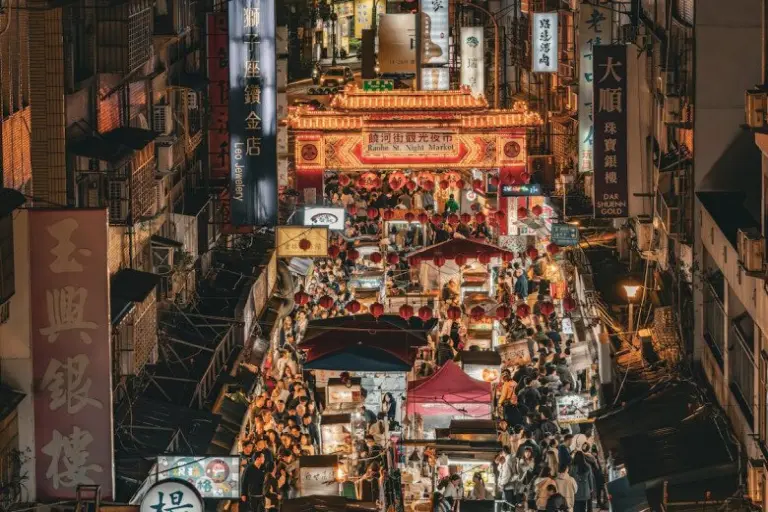
Prime Location and Excellent Transport Links
Located in Songshan District, Raohe stretches from the intersection of Bade Road (Section 4) and Fuyuan Street to the Ciyou Temple area. Its location makes it easy to combine market visits with nearby attractions.
Ciyou Temple, dedicated to the sea goddess Matsu and built in 1757, stands right at the market entrance. It features distinctive glazed tile roofs and a gold-plated Matsu statue. The Rainbow Bridge over the Keelung River is just a 10-minute walk away—ideal for night views with its color-changing LED lights.
Modern public transport makes the market easily accessible. Songshan Station on the MRT Green Line is just 5 minutes on foot from Exit 5. Bus routes 204, 205, 306, and 605 also stop conveniently at Songshan Tobacco Factory or Ciyou Temple.
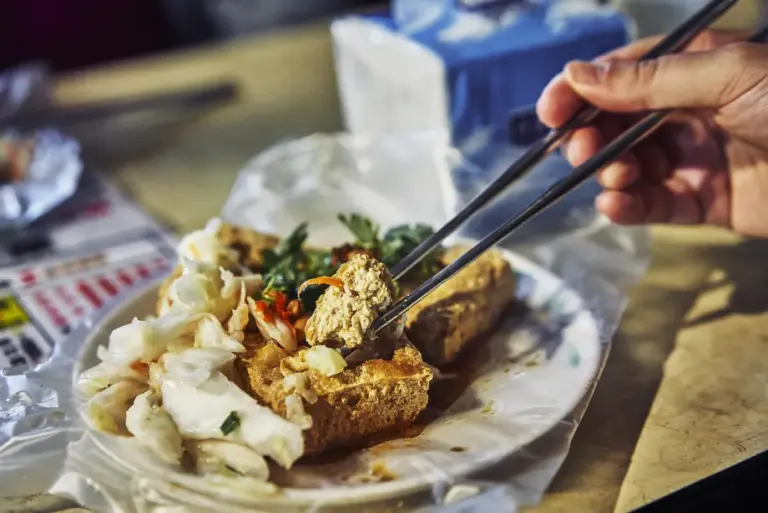
>> Try Korea’s must-eat street snack – Hotteok, the sweet pancake that wins every heart
Michelin-Recognized Culinary Treasures
The biggest draw at Raohe is its six Michelin Bib Gourmand stalls, elevating the market to global street food fame. The most famous is Fuzhou Black Pepper Buns, known for their crispy clay oven-baked shell filled with a savory pork and black pepper mix, blended with onions and shiitake mushrooms. Priced at just 70 TWD, the stall regularly draws long lines, especially from 6 PM to 9 PM.
Another highlight is Chen Dong Pork Ribs Medicinal Herbs Soup, a tribute to Chinese traditional medicine. Simmered with 12 premium herbs, white radish, and red dates, the broth is both flavorful and nourishing—just 100 TWD per bowl.
Shi Jia Braised Pork Rice represents authentic Taiwanese home-style cooking. Pork belly is stewed in dark soy sauce and Shaoxing wine, resulting in a rich, sweet dish typically served with pickled vegetables for balance.
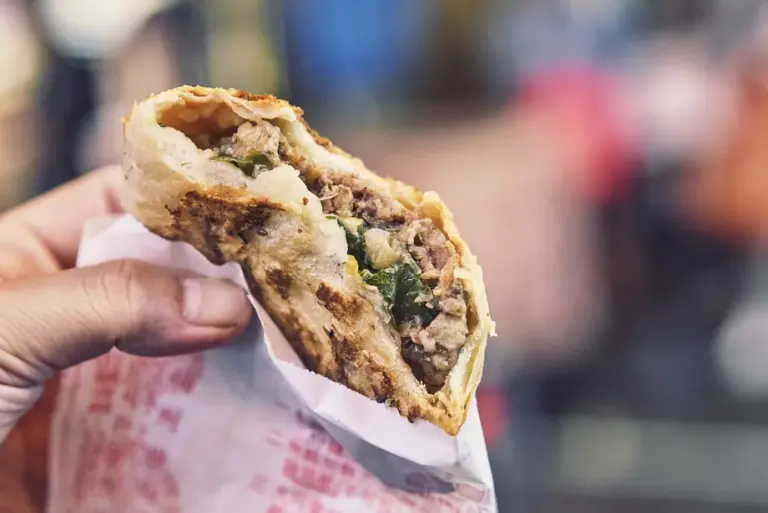
A Wide Range of Local Delicacies
Beyond the Michelin picks, Raohe offers countless beloved dishes:
- Oyster Vermicelli: A must-try made with chewy noodles, fresh oysters, and pork bone broth, topped with cilantro and chili flakes.
- Stinky Tofu: Arguably Taipei’s best, thanks to a 3-day fermentation process before deep-frying and serving with pickled cucumber. The smell is strong, but the flavor is irresistible.
- Vegetarian Rice Noodle Soup: Ideal for plant-based eaters, made with kombu and shiitake broth, tofu, and seasonal vegetables.
- Bubble Milk Tea: A must-have drink. Raohe’s special version includes a salted cheese foam topping that balances sweet and salty flavors.
- Mango Shaved Ice: A refreshing dessert of sliced fresh mango, coconut ice cream, and black tapioca pearls.

>> Boiled Snails: From Moroccan street food to a gourmet delicacy
A Rich Cultural Experience
Raohe is not just about food—it’s a vibrant cultural space. Tourists can explore Ciyou Temple, admire its architecture, and participate in traditional Matsu rituals held on the 23rd day of the lunar calendar each month, often accompanied by lion dances and firecrackers.
A stroll to Rainbow Bridge after a meal offers stunning nighttime views along the Keelung River.
Every December, the Raohe Food Festival brings together 50 street chefs from across Taiwan, showcasing unique techniques and new culinary creations.
In the seventh lunar month, the Ghost Month Night Market Tour introduces traditional offerings such as steamed rice cakes and lotus-leaf sticky rice, offering a fascinating look into Taiwanese folk beliefs.
Tips for Visitors
To avoid crowds, arrive before 6:30 PM or after 10:00 PM. Food stalls operate from 5 PM to midnight, while souvenir stalls usually close around 10:30 PM.
Although cash is still king, about 40% of stalls accept EasyCard (Taiwan’s public transport card), and 20% accept e-wallets like LINE Pay. A full meal costs around 150–200 TWD
Haggling is possible for fashion items like bags and wallets—prices can drop 20–30%—but it’s discouraged at food stalls. Beware of pickpockets, especially near the main gate on weekends.
The “Raohe Food Map” app (free on App Store and Google Play) helps locate Michelin stalls and even book ahead. A “Free Walking Tour” led by local volunteers departs daily at 6 PM, with registration at the info station near Ciyou Temple gate.
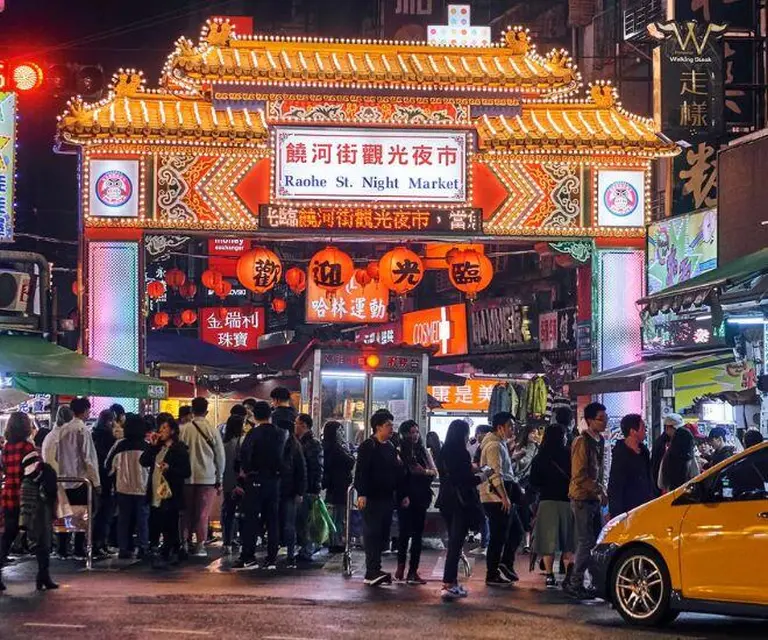
Today, Raohe Night Market stands not only as a food haven but also as a symbol of Taiwanese entrepreneurial spirit, adaptability, and cultural pride. Each dish and stall tells a story of tradition, innovation, and a community’s aspiration to share its flavors with the world.
>> Stinky Tofu: The infamously smelly delicacy travelers can’t resist in China

